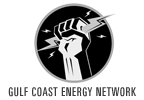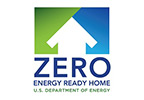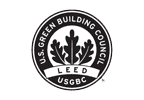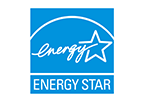What is “Green Building”?
“Green building” is the discipline of developing and building with a responsibility to the environment and to the community. The key to success is an integrated design process: a systems approach to the design, construction, and future operations of the building.
The U.S. Environmental Protection Agency focuses on the following green building issues by implementing various programs:
- Energy Efficiency and Renewable Energy
To improve energy efficiency, the EPA and U.S. Department of Energy created the ENERGY STAR® program, which aims to improve the energy efficiency of homes, buildings, and various building components and appliances. The program suits a variety of projects, such as new homes, home improvement, and businesses. For more information on clean, affordable, and secure energy, visit the U.S. Department of Energy’s Office of Energy Efficiency and Renewable Energy webpage. - Water Efficiency
The EPA’s WaterSense program promotes the use of water-efficient products that meet performance criteria for use in homes, landscaping, businesses and other applications. - Environmentally Preferable Building Materials and Specifications
The EPA has implemented a number of programs in order to encourage the use of better materials and good recycling practices. These programs include the Industrial Materials Recycling Program and the Environmentally Preferable Purchasing Program. They also provide Comprehensive Procurement Guidelines to builders. For more information, visit the EPA’s Sustainable Materials Management webpage. - Waste Reduction
The EPA supports projects that reduce, reuse and recycle waste generated from building construction, renovation, deconstruction and demolition. They promote cost-efficient and environmentally friendly solutions to help preserve natural resources and prevent waste and pollution. For more information, visit the EPA’s Land, Waste, and Cleanup Topics webpage. - Toxics Reductions
The EPA supports the research and development of safer chemicals and safer chemical processes through education and incentives, works to incorporate risk related concepts into chemical processes and products designed by academia and industry, and provides information about the hazards of lead, asbestos, and pesticides. For more information on finding products that perform and are safer for human health and the environment, visit the EPA’s Safer Choice webpage. - Indoor Air Quality
Indoor Air Quality (IAQ) (sometimes also referred to as Indoor Environmental Quality or IEQ) is a critical component of constructing "green" homes and buildings. The EPA offers several IAQ tools and programs designed to protect occupant health, promote comfort and productivity, and enhance the durability of structures. To learn more, visit the EPA’s Indoor Air Quality webpage. - Smart Growth and Sustainable Development
The EPA fosters Smart Growth and Sustainability aimed at developing healthy communities, promoting economic development, building strong neighborhoods and helping to make smart transportation choices. For more information, visit the EPA’s About Smart Growth webpage.
Meanwhile, the U.S. Green Building Council concentrates on Leadership in Energy and Environmental Design (LEED). LEED is the most widely utilized green building rating system in the world. Projects seeking LEED certification can earn points across several categories, including energy use and air quality. A project may earn one of four LEED rating levels based on the number of points achieved: Certified (40-49 points earned), Silver (50-59 points earned), Gold (60-79 points earned) or Platinum (80+ points earned). The process is designed to inspire project teams to seek innovative solutions that support public health and our environment, while saving building owners money over a project’s life cycle. For more information, visit the USGBC website or their LEED webpage.
More information on sustainable, green building can be found at www.floridagreenbuilding.org.






